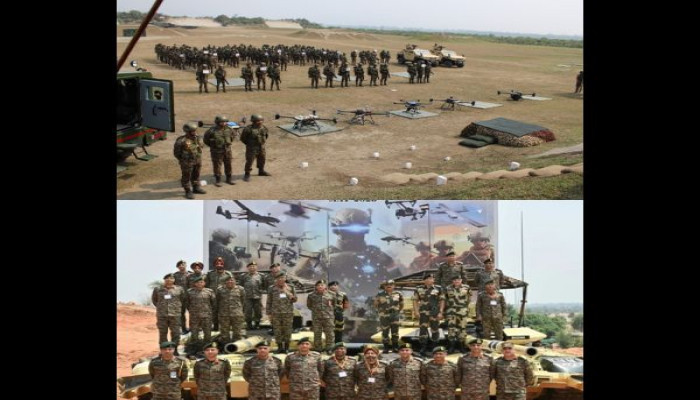India's defence capabilities receive massive boost with induction of Shatrunash and Agniastra
- In Reports
- 06:48 PM, Jun 13, 2025
- Myind Staff
The Indian Army reached a significant milestone in indigenous defence technology by inducting two new weapon systems, Shatrunash and Agniastra. Major Rajprasad R.S. of the Corps of Engineers designed both systems. These technologies brought improvements in conventional and counter-insurgency operations. They supported India’s goal of self-reliance in defence manufacturing.
Shatrunash, meaning “destroyer of enemies,” functioned as a portable electromagnetic pulse (EMP) gun. It marked progress in directed-energy weapon technology. The system uses high-power microwave radiation to disable electronic targets and doesn't require kinetic impact. It is highly effective against IEDs, drones, vehicles, and other electronic threats. Its non-kinetic design allows the Army to precisely disable threats while reducing collateral damage.
The Army developed Shatrunash to meet an operational need. The EMP technology gives forces the ability to disable enemy electronics and communication systems without causing physical damage. It will be of great help in counter-terrorism operations, where accuracy and low collateral damage are important.
Agniastra, meaning “weapon of fire,” is a portable multi-target remote detonation system. It enables the Army to engage and destroy multiple targets from a distance and plays a significant role in destroying bunkers, bridges, and fortified enemy positions. The system can be operated manually or through UAVs and UGVs.
Agniastra expands on the previously inducted Wireless Electronic Detonation System (WEDC). The system supports tasks such as room interventions, remote destruction of bunkers, and reserve demolitions and proves useful in both conventional and counter-terrorism operations. The device held “tremendous potential” for these applications, noted Indian Army officials.
Major Rajprasad R.S. received the NSG Counter IED Innovator Award for 2024–25. The National Security Guard presented the award at its international seminar in New Delhi on June 11, 2025, in recognition of his work on Shatrunash and Agniastra. It is his second NSG award, following one in 2023 for the Xploder system.
The Army acknowledged his contributions to improving operational safety in counter-terrorism and IED operations. His innovations made a significant impact in high-risk environments.
Major Rajprasad developed over 12 tactical innovations. The Army inducted four of them. His most notable earlier innovation was the Xploder. It was a multi-role kamikaze unmanned ground vehicle designed to handle IEDs and clear hideouts.
Army Chief General Upendra Dwivedi formally inducted the Xploder in December 2024. The Xploder was an all-terrain platform used in unmanned reconnaissance, surveillance, delivery of explosives, remote IED disposal, and kamikaze missions during hideout clearance. It is extremely useful in disaster relief.
He also developed the Vidyut Rakshak, which monitors, protects, and controls power generators using IoT. He designed the Mobile Reactive Munition System (MRMS) as well. The MRMS uses advanced targeting algorithms. It mimicks spider-like movement and approaches targets stealthily, representing an advancement in modern warfare tactics.
For the first time, the Army granted Technology Transfer (ToT) agreements for these systems to private defence industries. The Army Design Bureau (ADB) handled the transfer, with support from the Foundation of Innovation and Technology Transfer (FITT). This move will help build a strong domestic manufacturing ecosystem and aligns with the Atmanirbhar Bharat initiative.
The ToT marks a shift in India’s defence production strategy from importing to manufacturing in India. Since 2016, the ADB has enabled collaboration between the Army, academia, startups, and private companies. It worked on over 350 defence projects with more than 450 Indian firms. The projects cover drones, cybersecurity, robotics, quantum computing, and advanced weapons.
The Army has tested the systems in operational scenarios. The Xploder completed two years of trials before receiving clearance for mass production. Officials confirmed that the systems performed effectively in difficult terrain and complex environments. These technologies improved capabilities in combat engineering, reconnaissance, and IED handling.
The systems reduced the risk to soldiers and increased tactical effectiveness and supported the modern military focus on technology-led operations.







Comments